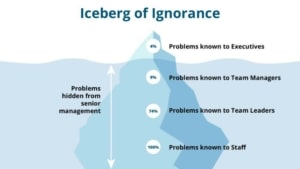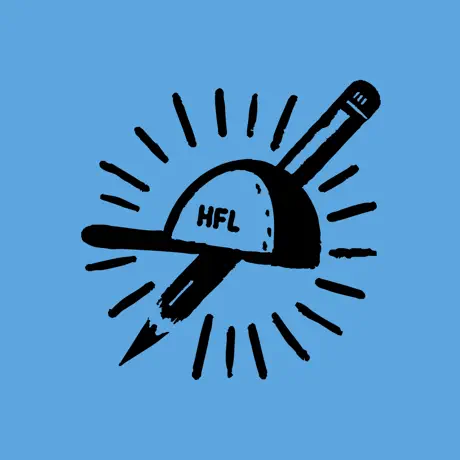“The Tip of the Iceberg” concept in management, developed 25 years ago by Sidney Yoshida, indicates:
- 4% of the problems are seen by executives
- 9% of the problems are seen by managers
- 74% of the problems are seen by team leaders
- 100% of the problems are seen by staff
Anyone who works in any kind of large organization knows this is true.
Except, of course, almost all executives and managers and many team leaders.
As an educator, I see this constantly. Teachers, for example, may comment on the paucity of the curriculum or the ineffectiveness of a policy, only to be told by people who do not actually teach the curriculum or enforce the policies (and who probably haven’t taught in a classroom in years) that the curriculum is excellent and the policies are perfection.
Nonsense, of course. But unless you have an administrator with sufficient ego to accept and process criticism, your complaints are likely to be ignored.
I know administrators who last taught in classrooms more than a decade or two ago.
Can you imagine these people telling a teacher anything about education?
If it’s been more than a decade since an administrator has stood before students on a daily basis, they likely have little of value to say to teachers today.
They probably taught in an age before the vast majority of children carried cell phones. Probably in an age before the internet became as ubiquitous as it is today. They’ve probably never had a class of students with laptops and water bottles on their desks at all times. They probably didn’t teach during the extreme partisanship that has divided our nation. They may have been teaching before before Sandy Hook or Parkland or Uvalde.
They certainly didn’t teach through a pandemic and it’s still echoing aftermath.
If it’s been longer than a decade since an administrator last taught in a classroom regularly, their job should be to simply support teachers by constantly and carefully listening to them and working like hell to meet their needs. Their opinions on teaching are almost entirely irrelevant unless those opinions reflect the opinions of the people doing the job every day.
The ones who see the icebergs and navigate around them every day.
As research indicates, they see less than 10% of the problems that exist in schools today.
Teachers, by contrast, see 100%.
But this is true in all professions. I consult with people in marketing, sales, advertising, technology, healthcare, and cyber security. I work with people in the food and fashion industries, academia, law enforcement, and more. And I hear this all the time:
The boss doesn’t understand.
The vice president doesn’t get it.
The director has no vision.
The CEO doesn’t see the real problems.
Contrast this reality with recent data on psychological safety in the workplace:
- 46% of staff fear retaliation for surfacing problems
- 39% of staff are not confident that problems will be addressed
- 25% of staff don’t trust their employers
- 82% of staff report feeling isolated
This is a disaster.
The people at the top can’t see most of the organization’s problems, and it would seem that many have also failed to create an environment where employees feel it’s safe or productive to bring those problems to light.
The Iceberg Problem is real, and its ramifications are disastrous. Unfortunately, many leaders resemble the captain of the Titanic, plowing ahead, completely unaware and unwilling to be aware of the multitude of problems all around them.










